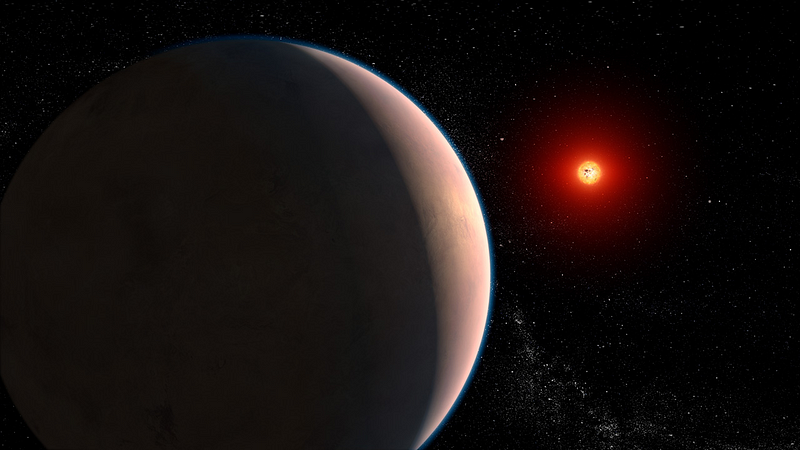Exploring Water Vapor in Exoplanet GJ 486 b: A New Frontier
Written on
Chapter 1: The Discovery of Water Vapor
Recent observations from the James Webb Space Telescope (JWST) have revealed an exciting development in exoplanet research: the detection of water vapor in the atmosphere of a distant rocky exoplanet. This could signify a major breakthrough, hinting at the potential for habitability beyond our solar system.
The JWST has quickly established itself as a pivotal tool for astronomers, unearthing critical insights about the universe since its launch. Its capacity to analyze exoplanet atmospheres in detail is particularly noteworthy, offering clues about conditions that might support life. Moreover, the telescope's observations of the early universe have shed light on the formation of the first galaxies post-Big Bang, enhancing our understanding of cosmic evolution.
In this latest research, astronomers have focused on GJ 486 b, a rocky exoplanet located about 26 light-years away in the Virgo constellation. With a mass three times that of Earth, GJ 486 b orbits a red dwarf star and has a remarkably short orbital period of less than 1.5 Earth days. This close proximity likely results in tidal locking, with one side perpetually facing the star.

However, researchers caution that the source of the detected water vapor remains uncertain. It’s possible that the vapor originates from the planet's host star instead of GJ 486 b itself.
Section 1.1: Characteristics of Red Dwarf Stars
Red dwarfs, the most common stars in the Milky Way, are smaller, cooler, and dimmer than the sun, typically having a mass ranging from 0.08 to 0.5 times that of our star. These stars emit most of their light in the infrared spectrum, making them challenging to observe with standard optical telescopes. Their long lifespans of tens to hundreds of billions of years make them prime candidates for hosting stable, habitable zones.

Despite their potential, the intense ultraviolet and X-ray radiation emitted by young red dwarfs can be harmful to nearby planets, potentially stripping away their atmospheres. Thus, astronomers are keen to understand if rocky planets within these hostile environments can sustain atmospheres long enough to foster life, a process that took around a billion years on Earth.
Subsection 1.1.1: Implications of Water Vapor Detection
The detection of water vapor on a hot rocky planet is a significant advancement in exoplanet science.
“Finding water vapor in an atmosphere on a hot rocky planet would represent a major breakthrough for exoplanet science. But we must be careful and make sure that the star is not the culprit.”
~ Kevin Stevenson, Principal Investigator

Chapter 2: Insights from JWST Observations
In order to analyze GJ 486 b's atmosphere, the JWST employed its Near-Infrared Spectrograph (NIRSpec) to observe the exoplanet during transits across its star. Even though GJ 486 b is too hot for liquid water, with temperatures reaching 800 degrees Fahrenheit (430 degrees Celsius), the telescope succeeded in identifying water vapor signals.
The research team conducted their observations during two one-hour transits and utilized three distinct analysis methods, all indicating a notable peak in shortwave infrared light, which they attributed to water vapor.
The first video titled Hubble Uncovers Water Vapor In Small Exoplanet's Atmosphere discusses the implications of finding water vapor on exoplanets.
The team plans further investigations using the JWST's Mid-Infrared Instrument (MIRI) to assess the planet's dayside, seeking to determine whether the hottest point aligns with the star. An offset peak might suggest a thicker atmosphere capable of heat circulation.
The second video titled NASA detects water vapor in exoplanet atmosphere elaborates on the challenges and next steps in studying exoplanet atmospheres.
With continued observations, scientists aim to clarify the nature of GJ 486 b's atmosphere and its potential for supporting life. Complete research findings are available on the Preprint server arXiv and will be published in the Astrophysical Journal Letters.